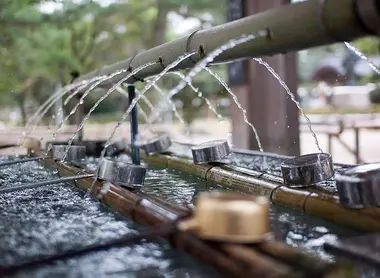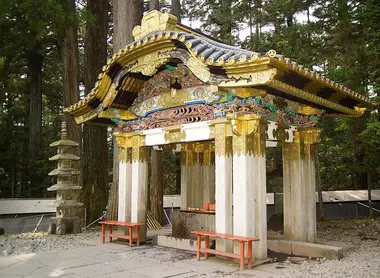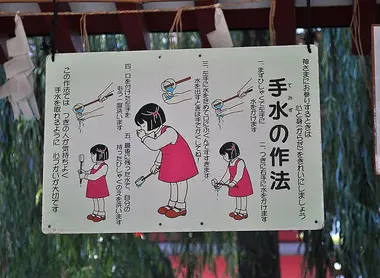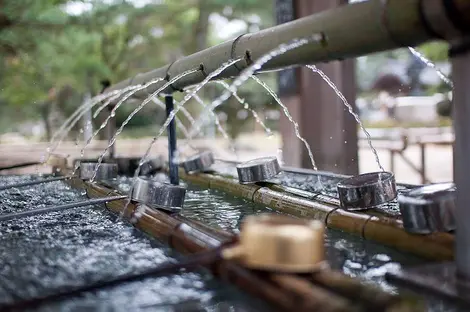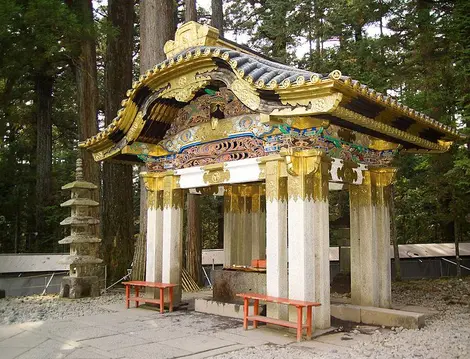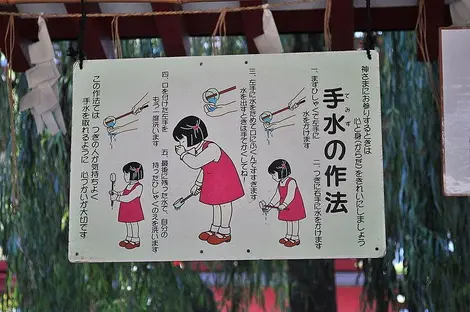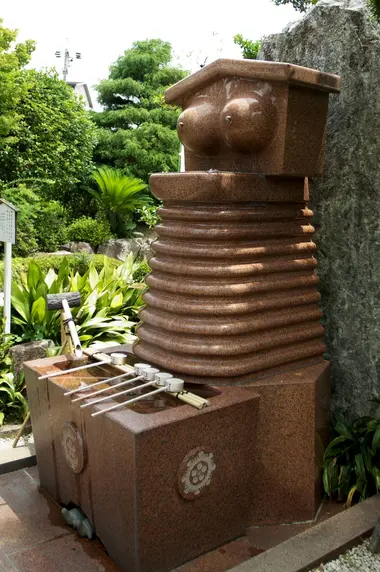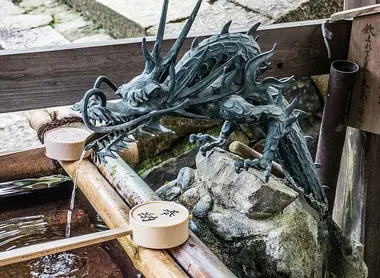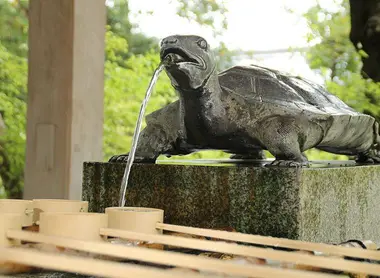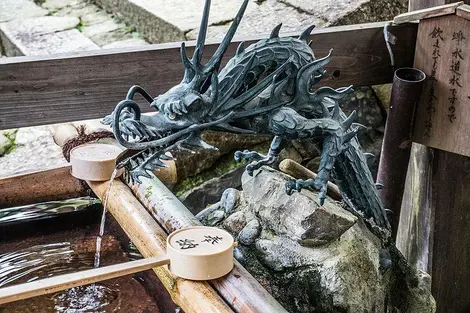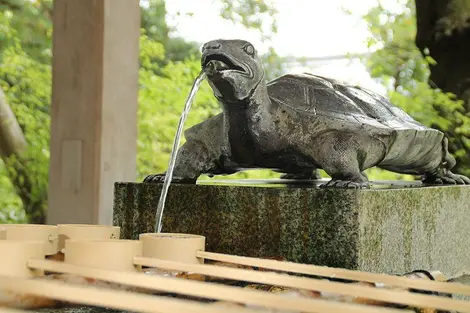Le chôzuya 手水舎
- Publié le : 20/09/2018
- Par : S.V.
- Youtube
Se purifier le corps et l'esprit
À l’entrée des sanctuaires shinto, les fidèles doivent se laver les mainset se rincer la bouche au chôzuya avant de pouvoir se présenter face au kami deslieux.
Un bain pour origine
La purification est une pratique essentielle du shintoïsme quitrouve son origine dans le mythe d’Izanagi et Izanami, les kami co-créateursdu monde. Le Kojiki ou "Chronique des faits anciens", recueil des mythesfondateurs de l’archipel compilé en 712 par Hieda no Are, relate la légende du couple démiurge et dubain de purification d’Izanagi. Lorsqu’Izanami décède en donnant naissance aukami du feu, Izanagi décide de la retrouver à Yomi, le royaume des morts. Maisil est horrifié en l’y trouvant monstrueusement défigurée. Il s’enfuit,poursuivi par la jeune femme humiliée et furieuse et parvient à quitter Yomi.De retour dans le monde des vivants, Izanagi s’immerge dans l’eau pour sedébarrasser des impuretés du royaume des morts. Ce bain purificateur soigne ainsison corps et son cœur meurtri.
À lire : 5 légendes japonaises célèbres
Une purification pleine et entière
La purification revêt dès lors une place importante dans le culte shinto et s’exécute sous plusieurs formes : des ablutions (misogi), des prières sous une cascade (mizugori), le harae dans les cérémonies shinto au cours desquelles le prêtre débarrasse les fidèles de leurs impuretés en agitant l’o-nusa devant eux.
Toutes ces pratiques ont pour but de nettoyer votre corps et votre esprit. Seuls les fidèles purifiés peuvent approcher les kami pour prier ou leur signifier de la gratitude. C’est donc pour cette raison que vous trouverez sur le chemin menant au bâtiment principal du sanctuaire, un chôzuya (également appelé temizuya ou suibansha). Cette fontaine est destinée aux ablutions de purification comme l’indique parfois une inscription gravée : "lave mon esprit, nettoie mon cœur".
Bien souvent, l’eau se déverse depuis un dragon sculpté à l’effigie de Ryûjin, le dieu de la Mer. Mais parfois, ce dernier laisse place à une tortue, un cerf, un sanglier ou bien encore à la poitrine de Senju Kannon. Qu’il s’agisse d’un simple bassin en pierre ou en bois au pavillon sculpté le plus sophistiqué, le rituel reste le même.
Les différentes étapes du rituel
- Prenez l’hishaku (louche traditionnelle) dans votre main droite et remplissez-la d’eau.
- Nettoyez votre main gauche.
- Nettoyez ensuite votre main droite en tenant la louche de la main gauche.
- Reprenez l’hishaku dans votre main droite. Versez de l’eau dans la paume de votre main gauche pour vous rincer la bouche. Vous ne devez en aucun cas porter la louche à votre bouche ou avaler l’eau.
- Recrachez le plus discrètement possible l’eau dans la goulotte au pied de la fontaine.
- Nettoyez à nouveau votre main gauche.
- Placez la louche à la verticale avec vos deux mains et faîtes ruisseler l’eau le long de l’hishaku pour la rincer.
- Replacez la louche à son emplacement d’origine.
Vous voici prêts à parler à l’oreille du kami !
Pour aller plus loin : La notion de dieu en japonais
